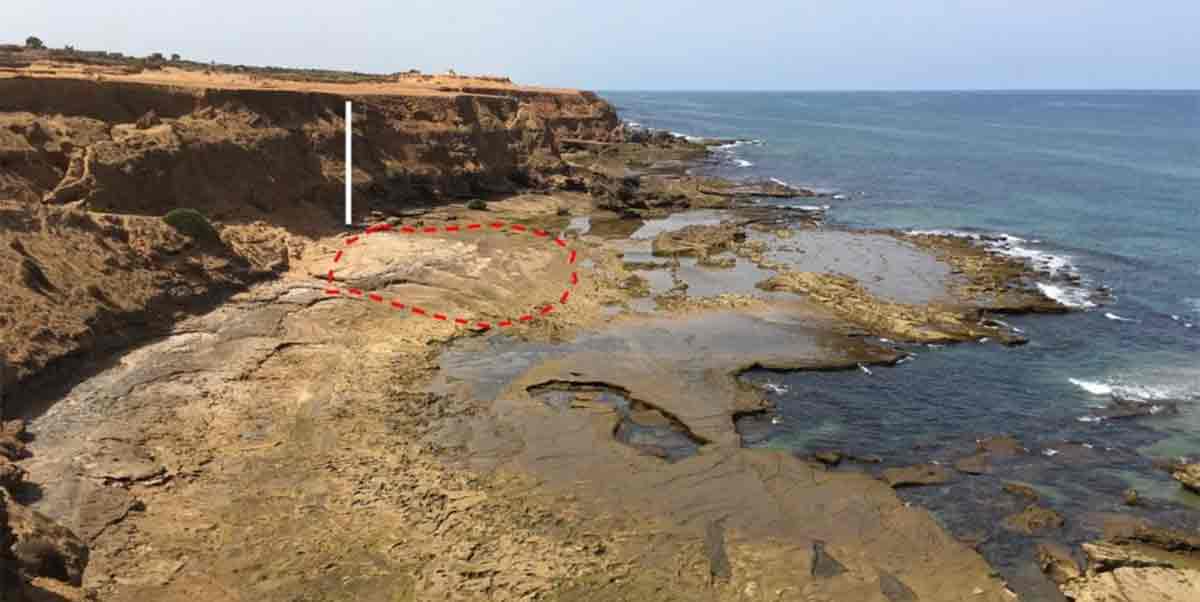90,000-Years-Old Footprints Discovered On Moroccan Beach
85 human footprints dating to 90,000-years-ago have been found on a beach in Morocco. But how did they get there, and what were the people doing?
In 1964, when Margaret Fishback Powers wrote the world-famous poem, "Footprints,” she was a young woman at a crossroads in her life, searching for direction. And this was also the case for a group of people who some 90,000-years-ago left behind two tracks of 85 human footprints on what is today a Moroccan beach in North Africa. First discovered in 2022, according to a new study published in the journal Scientific Reports, the 85 human footprints represent “one of the largest and best-preserved trackways ever found.”
Lead author Mouncef Sedrati, an associate professor of coastal dynamics and geomorphology at the University of Southern Brittany in France, told Live Science his team were exploring on a nearby beach. It was while they were waiting for tides to change that Sedrati suggested his team move northwards, where they subsequently identified the human footprints on an adjacent beach.
- Last Hominin Standing: Extreme Adaptation of Late Pleistocene Humans
- 104,000-Year-Old Tooth of Mysterious Hominin Child Raises Questions About Human Evolution
Realigning The Earliest Waves of Migration
Traditionally, fossil remains have shown Homo ergaster (or African Homo erectus) was the first human species to leave Africa, penetrating southern Eurasia by 1.75 million years ago. This narrative claimed their descendants, Asian Homo erectus, spread eastward into Southeast Asia by at least 1.6 million years ago.
However, modern research maintains that either australopithecines, or an unknown species of Homo, had migrated out of Africa before Homo ergaster evolved, possibly about 2 million years ago.
Genetic studies indicate an expansion out of Africa about 1.9 million years ago, and gene flow occurring between Asian and African populations by 1.5 million years ago.
- Denizens of South Africa’s Cradle of Humankind: The First Walking Apes
- Collective Learning: So Easy, Even A Caveman Could Do It

Some of the 85 footprints made by humans thousands of years ago at a beach in Morocco. (M. Sedrati, et al/Nature)
Charting “Astronomically Slow” Waves Of People
It is generally agreed that our species originated on the African continent at least 300,000 years ago. And based on findings in southern Greece and the Levant, it is known that migration waves moved northwards out of Africa around 200,000 years ago.
A University of Hawaii paper, published in the journal Nature, recently demonstrated how a small group of Homo sapiens left Africa around 100,000 years ago in a series of “astronomically-paced slow migration waves.” And another study demonstrates how these people arrived in southern Europe around 80,000-90,000 years ago. These are the people who left their marks on the Moroccan beach.

Images of some of the hominin tracks in Larache. (M. Sedrati, et al/Nature)
Analyzing Quartz Crystals For Answers
Dr. Sedrati said “the exceptional thing” about the recent discovery of the 85 human footprints, and the main reason why they are so well preserved, is that the beach is on a rocky platform covered in clay sediments. This means the tracks were preserved on the sandbar as tides consumed the rest of the beach.
To accurately date the human footprints the team used optically stimulated luminescence to reveal when the quartz in the beach sand was last exposed to the sun. The researchers deduced that “Homo sapiens walked on the beach roughly 90,000 years ago,” during the Late Pleistocene. Sedrati’s team next measured the length and depth of the prints, to assess the ages of the people in the group.
Analysis of foot size and stepping pressure determined the presence of “children, adolescents and adults.” Thus, the researchers concluded that the group was “multigenerational.” And estimating how the group got to the Moroccan beach, the team wrote that they “likely travelled through the Sinai peninsula before moving north into a landscape with a Mediterranean climate.”
Sherlock Sedrati and the Mysterious Footprints
Dr. Sedrati, who led the team in this new discovery, was also on the research crew that in 2020 discovered human and animal footprints embedded on an ancient lake surface in the Nefud Desert in Saudi Arabia, dated to around 120,000 years old.
The discoveries in the Nefud Desert suggested that a group of people had “paused for a drink of fresh water or to track herds of elephants, wild asses, and camels that were trampling the mudflats”. And in the case of the Moroccan beach, it is hoped future analysis will provide a reason, or purpose, for what the people who left behind the 85 footprints were doing there.
Top image: Panoramic photograph of the rocky shore platform on the Larache area coast of Morocco where the 90000-year-old footprints were found. The area delimited by the dotted red line corresponds to the footprint discovery zone. Source: M. Sedrati, et al/Nature
By Ashley Cowie

















